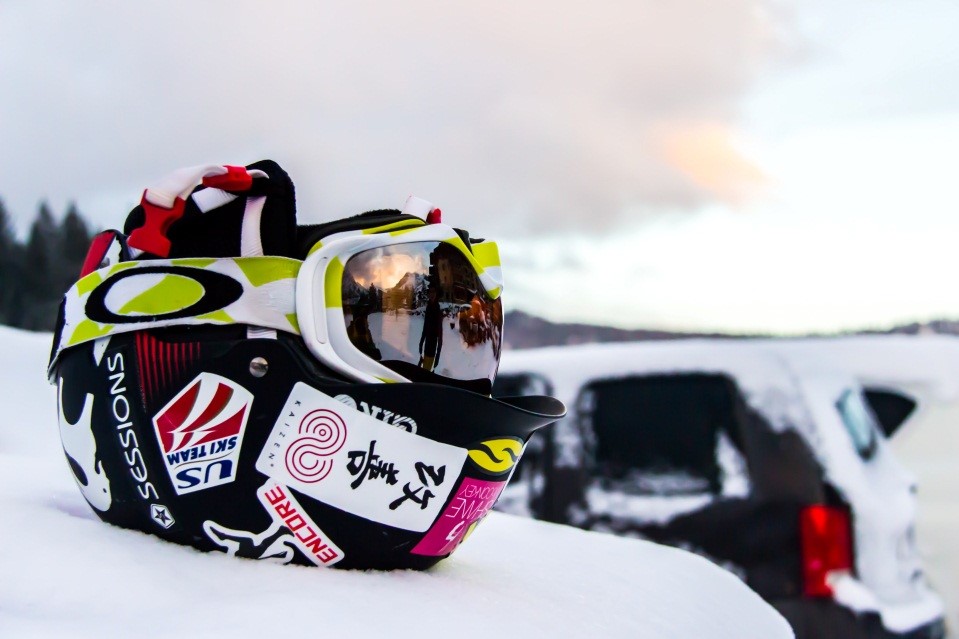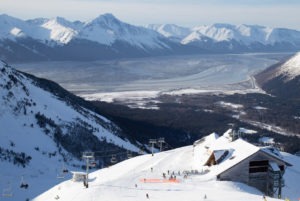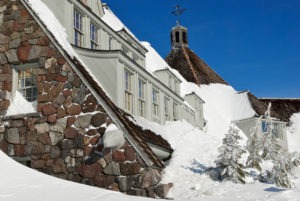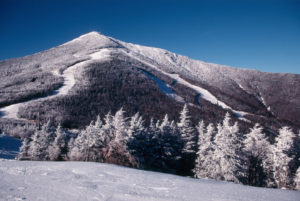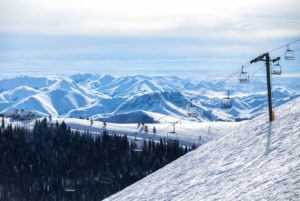Nothing beats the feeling of rushing down snowy mountain slopes! The adrenaline rush leaves you wanting more, whether you are crusading down blues or conquering black diamonds.
Just like with any sport, safety and comfort should always come first while you are staying active! A good snowboard helmet should help you meet both aspects. Providing warmth, ventilation, and safety.
Unfortunately, head injuries while snowboarding and skiing are all too common. It is important to protect yourself and your loved ones with a proper snowboarding helmet. Luckily, there are a lot of stylish helmet options constructed, with improved technology.
While a helmet is always a great idea, not all are created equal. Factors like fit, size, adjustable features, and added technology can determine just how protective it will be.
Having the right knowledge when selecting a snowboard helmet and understanding your size will also save you time visiting the shop to try on.
The Components
Snowboard helmets are designed specifically for their environment. Constructed with padding for warmth, especially around the ears, many choose not to wear a beanie under their helmets. Additionally, to help cool you down during intense runs and warmer days, many come with varying degrees of ventilation, some are even adjustable and open and close.
The outer layer of the helmet, the shell, is your first line of defense against hard falls, snow, and wind. They come in a wide variety of stylish designs and colors, like black, white, yellow, gray, and more!
The inner liner, which is usually made from expanded polystyrene foam (EPS), is built and incorporated to be the internal protection in your snowboard helmet, providing you with comfort, and helps in absorbing impact if you fall.
Knowing Your Head and Helmet Size
Most of the time, a soft-flexible measuring tape will do the trick, it is a great place to start for basic size. When measuring, it helps to position it right above your eyes in the center just above your brows, then wrap the tape around the thickest part of your head (just above the ears), and proceed with the measuring, to where the two tips of the tape overlap. This is much easier if you can have someone help you with the measuring, by doing so you will likely get a more accurate result as well.
Once you know your measurements, helmet size guides based on brand and specific helmets should be referenced to purchase. If you get to a shop to try on snowboard helmets and you find one that you feel comfortable in, there are a few things to keep in mind.
The Helmet Chin Strap
Though often overlooked, the chin strap is an important piece. Simply put, a chin strap provides snowboarders with security and peace of mind that when the worst happens, the helmet will stay on.
As a general rule, you should be able to slip your thumb through the chin strap behind the buckle, just so you can adjust it accordingly when necessary. You should not have too much room between your chin and the strap, but it should not rub or chafe in an uncomfortable way throughout the day.
Always Check the Fit
Whether you are trying on in-store or you have ordered online, go for a helmet that is snug, but not too tight on your head. It should be snug enough that there are no gaps, and it will not shift, but should not create any high pressure or pain points.
Another thing you want to consider is snowboarding goggle compatibility. It always helps to be sure that the goggles you have will fit with your choice of head gear, and there should be no gap between the top of your goggles on your forehead.
If you’re having a hard time finding the right size, select a helmet with an adjustable tightening function at the base of the neck.
The Shake Test
Once you have the snowboard helmet you like on and have it buckled, aggressively shake your head in all directions. This would be a simulation should you take a tumble on the slopes. If it moves, consider a smaller size, as it is crucial that it stays on your head to provide maximum protection.
The Buckle-Up
Investing in a solid snowboarding and skiing helmet and making sure it is a perfect fit is essential for safety. Even when you take all the necessary precautions, there is still no guarantee on the mountain, so go with the best odds! A good snowboard helmet should fit perfectly, allow your head to breathe, and should also give you a sense of security and confidence, so that you can enjoy snowboarding without worrying.
